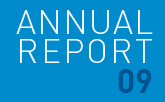Alaska has two proposed gas pipelines in progress (sponsored by Alaska Gas and TransCanada), with an Open Season expected to clarify the investment landscape regarding this major infrastructure during 2010. BP has a stake in Alaska Gas.
In Canada, Repsol YPF (with a 75% stake in the project through its subsidiary Repsol Energy Canada) has begun work on its Canaport LNG regasification plant, planned to distribute gas both in Canada and the United States. The group initially proposed injecting 28 million m3 per day into the North American gas pipeline system.
In early November it was announced that Iberdrola was already in a position to ship LNG to the US market, following the entry into force of the agreement signed with oil company Chevron, giving it access to an annual regasification capacity of 1 bcm at the Sabina Pass plant close to Houston. The agreement, reached as a result of an auction process, allows Iberdrola to offload one methane tanker per month in the USA.
The countries of the Southern Cone are looking to LNG to meet their future demand for natural gas. LNG imports to South America will grow over the coming years, once terminals have become operational in Brazil, Argentina and Chile. New terminals in Mexico would also feature on this panorama.
There are currently five offloading and regasification terminals in operation in the Southern Cone (one in Argentina, a floating regasification plant, two in Brazil, both floating, and two in Mexico), along with an additional facility in Puerto Rico. A further three are also under construction: two in Chile (Quintero and Mejillones), and another in Mexico, Manzanillo. Two more are still awaiting a final investment decision: one in Mexico and another in Uruguay.
On the export side, one is under construction in Peru, and two more are planned in Venezuela: Cigma LNG T1 and Mariscal Sucre LNG T2. As is well known, Venezuela's past commitment to this goal is a tale of frustrations. We trust that it will now achieve definitive momentum.
In Venezuela Repsol YPF confirmed in late October a major offshore discovery (at 3147 m) of gas in the block Perla IX, in which it has a 50% stake along with ENI. This discovery was classified as one of the five biggest worldwide in 2009.
Venezuela and Trinidad & Tobago have shared gas reserves, in the specific form of at least three major gas fields running along their maritime border.
Trinidad & Tobago has given up on the idea of building a fifth liquefaction line, following a feasibility study. They do not yet have sufficient gas in place in order to embark on such an investment.
In Mexico, the Manzanillo terminal located on the Pacific Coast is expected to become operational in 2011.
In Argentina the government approved in mid-2009 an increase in the wellhead price of gas, although some analysts are of the opinion that the new price is still inadequate in order to embark on significant exploration.
Chile received its first shipment of LNG at the Quintero terminal in July 2009. The plant is capable of meeting 40% of current demand. GDF Suez is involved in the second terminal (Mejillones), which could begin commercial operations in spring 2010. Among other aims Chile is looking to break its gas alliance with Argentina, with certain unpleasant memories in mind, such as the interruption in supply during a recent southern hemisphere winter.
The two floating terminals in Brazil entered service in 2009, located in the North and in Rio de Janeiro. A third terminal was recently cancelled, although Petrobras insists that it is considering a third terminal in the south of the country for 2013. Through these initiatives Brazil has reduced its dependence on Bolivian gas.
As mentioned earlier, thanks to the successful search for new offshore fields in the natural gas market, Brazil's medium-term role could shift from being an importer to that of an exporter.


